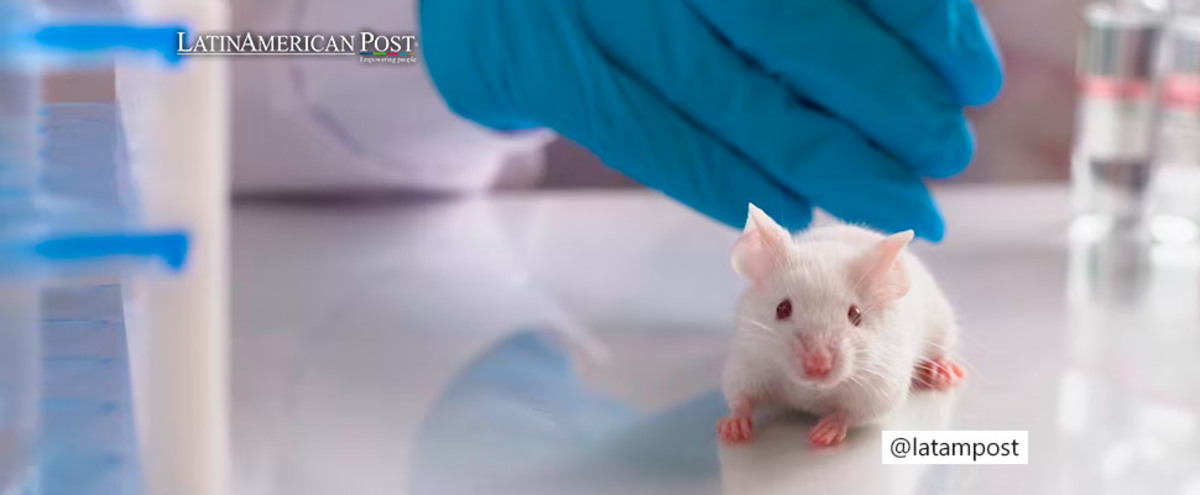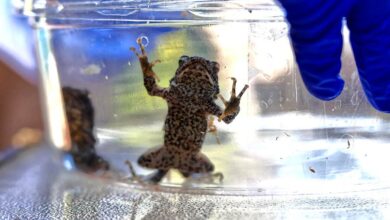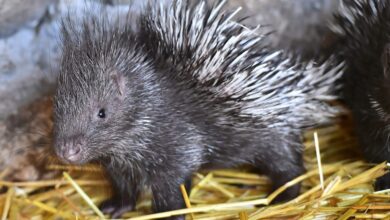Animal Experimentation: Prohibitions and Strategies to Reduce its Use
Animal experimentation has been an important resource in scientific research. However, governments and researchers are taking steps to change this reality and reduce its use. Find out what some of these strategies are.

Photo: Freepik
LatinAmerican Post | Joshua Radesca
Listen to this article
Leer en español: Experimentación animal: prohibiciones y estrategias para reducir su uso
Before medicines, vaccines, new medical procedures, or even cosmetic products are tested on humans, it is usual to test them on animals first. This makes it possible to verify the positive or risk effects that they may have on people's health. Animal experimentation is not only a scientific resource, on many occasions it is also a legal requirement that researchers must comply with.
According to an article in the Peruvian Journal of Experimental Medicine and Public Health, “A laboratory animal is defined as any living being, non-human, vertebrate or invertebrate, used for experimentation and other scientific purposes; its use is fundamentally based on the physiological analogy with the human species. Among the animals used in research are nonhuman primates, prosimians, cats, dogs, reptiles, amphibians, sheep, pigs, goats, fish, insects, and rodents.
Animal experimentation has been an important element in the evolution of medical science. “The development of most effective medicines and vaccines against many diseases are based on research carried out in experimental animals. For example, the discovery of insulin in 1923 thanks to experiments on dogs has allowed the lives of millions of diabetic people to be saved," say Ana Polache Vengut and Claudia Esposito Zapero, researchers at the University of Valencia in an Ecoavant article. They also state that "everything we know today about the nature of cancer and many of the drugs available to us have been obtained mainly from experimentation on rodents, among other animals."
With the advancement of technology and the development of awareness in relation to animal protection, there are more and more public and private organizations that advocate the use of alternative means to animal experimentation. "Due to public pressure and that of the scientists themselves, there is a growing tendency to apply the principle of three Rs in research with animals, a fact that is manifested in the countries' own laws," explains María Pilar Vinardell Martínez-Hidalgo, from the Faculty of Pharmacy of the University of Barcelona, in an article in the journal Acta Bioethica.
The three R's refer to an idea that arose in 1959, when Russell and Burch published the book "The Principles of Humane Experimental Technique". His intention is to replace experimental animals with other methods that do not involve their use, reduce their number when it is necessary to use them, and refine techniques to reduce their suffering. In various countries around the world, at the investigative and legislative level, they are already taking the necessary steps to achieve what the three Rs pursue and, in the future, extend the use of alternative means to animal experimentation.
Options for the use of animals in laboratories
From various fields, strategies are advanced to encourage and find options for animal experimentation. The Animal and Society Research Chair at the Rey Juan Carlos University explains that "for years, scientists have been doing what they do best to reduce and even avoid the use of animals in laboratories: research, but in this case research about alternative methods to the use of animals, which tend to be less complex, more integrative, cheaper, and easier to standardize. In other words, the benefits are not only bioethical, but also scientific."
According to the organization People for the Ethical Treatment of Animals, Peta , “These alternatives to animal testing include sophisticated tests using human cells and tissues (also known as in vitro methods), advanced computer modeling techniques (often referred to as in silico) and studies with human volunteers. This same body points out as advantages that “these and other non-animal methods are not hampered by differences between species that make it difficult or impossible to apply the results of animal tests to humans, and generally require less time and money to complete."
We recommend you read: Vaccines for Bees, how do they Work?
Legal measures against the use of animals in laboratories
In the United States, a 1938 provision making it mandatory to test drugs on animals before conducting clinical trials on humans was recently changed. The FDA (Food and Drug Administration) has announced the removal of this requirement. All of this within the framework of the FDA Modernization 2.0 Act, signed by President Joe Biden. This provision does not prohibit animal testing, but it does give drug manufacturers the ability to use alternative methods where appropriate.
For its part, the European Commission (EC) this year adopted around a hundred test methods to determine the safety of chemicals that do not warrant animal testing. The commission noted that most recently approved toxicity test methods in the European Union do not involve the use of any animals. Likewise, he pointed out his commitment to animal welfare and with the aim of reducing and replacing the use of animals in these tests.
In Latin America, there are various governments which have established restrictions on animal experimentation. In 2021, the Senate of the Mexican Republic agreed to a ban on cosmetic testing on animals. The Brazilian government also announced the restriction of the use of vertebrate animals in laboratory tests for the cosmetics industry. This prevents cats, dogs, rabbits, rodents and similar species from being used in scientific research, development and quality control of products such as cosmetics, perfumes, or personal hygiene items. Colombia is another of the countries in the region that have advanced laws for the prohibition of the use of animals in tests for the cosmetic industry. These are laws that seek to encourage alternative measures to animal studies in laboratories. The idea is that animal procedures are used in the health sector only as a last resort.




